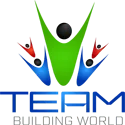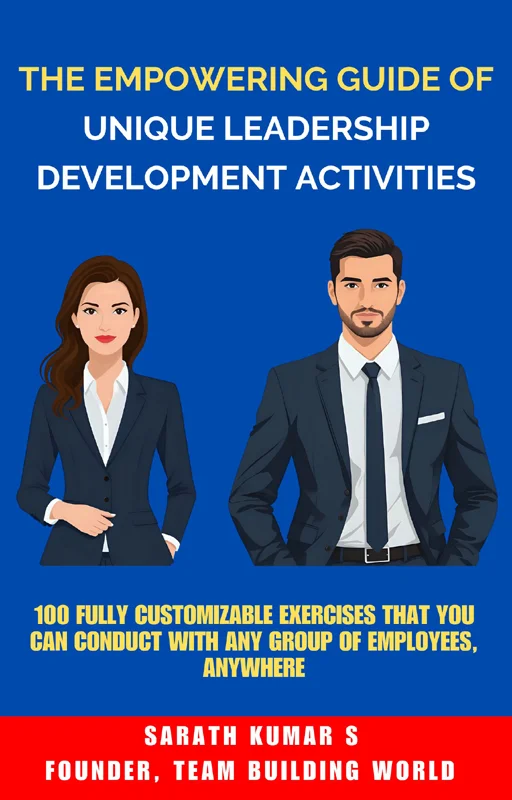10 Employee Development Activities for the Workplace
Are you in search of some fun employee development activities?
Employee development is essential for fostering professional growth, improving workplace morale, and enhancing team performance. Engaging in the right activities can make learning and skill-building more enjoyable. They help employees feel valued and motivated.
In this article, let’s see 10 creative employee development activities to try in your workplace. They can help your employees develop new skills, build relationships, and have some fun while doing so.
10 Employee Development Activities for the Workplace
Here are some ideas for employee development activities that are sure to engage and motivate your team.
#1. Lunch and Learn Session
This is an informal gathering where employees can share knowledge on various topics during lunch breaks. It is an excellent opportunity for learning and fostering collaboration.
Time: You decide
Materials: Presentation or discussion material, projector, or handouts if needed
Participants: Entire team or selected group
Instructions
- Arrange a free lunch for all the participants.
- Choose a speaker to present on a relevant topic, such as industry trends or a new skill.
- Encourage brief Q&A sessions after the presentation for clarity.
- Provide examples such as demonstrating a quick tech skill or sharing effective communication tips.
Debrief
Evaluate whether participants found the session engaging and relevant. Identify any additional topics that could interest the team for future sessions.
You can also read: How to Develop Employees into Leaders?
#2. Job Shadowing
This activity allows employees to observe and learn from their colleagues or superiors by shadowing them while they perform their job duties. It promotes collaboration, empathy, and understanding of different roles within the organization.
Time: You decide
Materials: Job shadowing schedule and guidelines
Participants: Employees from different departments or job levels
Instructions
- Create a job shadowing schedule for interested employees to sign up for.
- Pair up employees from different departments or job levels. Instruct each person to observe their partner’s daily responsibilities and decision-making processes for a set time.
- Provide guidelines on what to observe and ask during the job shadowing experience.
Debrief
Discuss what employees learned from their job shadowing experience and how it can benefit their own roles as well as the organization as a whole. Encourage them to share any ideas or suggestions for improvement based on their observations.
You can also read: The 10 Best Employee Development Books for Leaders
#3. Skill-Swap Workshop
This activity allows employees to teach and learn new skills from each other in a fun setting. It can help build camaraderie, improve team dynamics, and foster a culture of continuous learning.
Time: You decide
Materials: Materials needed for each skill (optional), and guidelines
Participants: Employees from different departments or job levels
Instructions
- Create a schedule with different skills that employees can teach others and learn from others.
- Ask interested employees to sign up for the skills they want to learn.
- Invite each person to teach a skill to their teammates. Provide guidelines on how to teach and learn the selected skills effectively.
Debrief
Discuss what employees learned from the skill-swap workshop and how they can apply their new skills in their roles. Encourage them to continue sharing knowledge and learning from others.
#4. Book Club
A book club fosters learning by encouraging employees to read and discuss books relevant to their professional and personal growth. It can enhance critical thinking, communication skills, and team bonding.
Time: 15-20 minutes per session (weekly or bi-weekly)
Materials: Selected book(s), and discussion questions
Participants: Any number of employees per group
Instructions
- Select a book that aligns with the team’s interests or development goals. Topics can include leadership, innovation, productivity, or work-life balance.
- Schedule regular meetings for group discussions, either in-person or virtually.
- Assign chapters or sections to read before each session.
- Facilitate discussions with thought-provoking questions and encourage everyone to contribute their perspectives.
Debrief
At the end of each book, discuss the key takeaways as a group and how they can be applied in the workplace. Encourage the participants to suggest books for future sessions and reflect on how the activity has impacted their growth.
#5. Team Innovation Challenge
This activity inspires creativity and problem-solving by encouraging employees to tackle a fun workplace challenge. It can promote collaborative thinking and uncover innovative ideas.
Time: 10-20 minutes
Materials: None (But use paper and pen if needed)
Participants: Small teams of 3-6 employees
Instructions
- Present a fictional or real challenge that the organization could encounter.
- Form small teams, and provide clear instructions on brainstorming and prototyping solutions.
- Set a time limit to create a sense of urgency and excitement.
- Allow each team to present their solutions and discuss the rationale behind their ideas.
Debrief
Highlight the most creative solutions and discuss how they could be applied to real-world scenarios. Share feedback with the teams and celebrate their efforts.
#6. Virtual Learning Session
Offering virtual learning sessions provides employees with flexibility and access to expert-led training or workshops. This helps them acquire new knowledge and skills at their own pace while accommodating different schedules.
Time: You decide
Materials: Online meeting platform, and presentation or training materials
Participants: Entire team or specific groups interested in the topic
Instructions
- Choose a relevant topic or skill to focus on, such as project management, time management, or technical training.
- Arrange for an internal or external expert to lead the session.
- Set up an interactive format that encourages questions and discussions, such as polls or breakout rooms.
- Record the session for employees who are unable to attend live.
Debrief
Collect feedback on the session’s content and delivery. Discuss how the knowledge gained can be incorporated into everyday tasks or projects.
#7. Volunteer Activity
Volunteering as a group not only gives back to the community but also strengthens team spirit and personal fulfillment. This activity creates opportunities for employees to build relationships and develop soft skills outside of the office environment.
Time: Half-day to full-day commitment
Materials: Volunteer project plan, and supplies if required
Participants: Groups of any size
Instructions
- Identify a local charity or cause that aligns with your organization’s values.
- Plan activities, such as food drives, cleaning parks, or mentoring youth.
- Encourage participation by highlighting the social impact of the activity.
- Organize logistics, including transportation and communication with the charity.
Debrief
Reflect on the experience and discuss how it impacted the group as well as the community. Share stories or moments from the activity to foster a sense of accomplishment.
#8. Hackathon
A hackathon is a focused, time-bound event where participants collaboratively solve problems, brainstorm innovations, or develop creative projects. It is an ideal way to foster innovation, teamwork, and technical growth.
Time: You decide
Materials: Problem statement, tools, and software required for project development
Participants: Cross-functional teams or interested employees
Instructions
- Define the goal of the hackathon, whether it is solving a specific challenge or encouraging open-ended innovation.
- Form diverse teams with a mix of skills.
- Provide the necessary tools and a structured timeline for the event.
- Each team should present the final solutions or prototypes to a panel of judges for feedback and recognition.
Debrief
Summarize the key outcomes of the hackathon and identify potential projects to develop further. Appreciate the teams’ effort and creativity, and discuss how frequent hackathons can benefit the organization.
#9. Wellness Workshop
A wellness workshop promotes physical and mental well-being by educating employees on healthy habits and self-care practices. This session can boost morale, reduce stress, and improve overall productivity.
Time: You decide
Materials: Workshop agenda, wellness expert or facilitator, and any necessary tools
Participants: Entire team or individuals interested in enhancing their well-being
Instructions
- Choose a wellness topic such as mindfulness, nutrition, exercise, or stress management.
- Invite a wellness expert or certified professional to lead the workshop.
- Incorporate interactive elements, like guided exercises, group discussions, or Q&A sessions.
- Provide practical tips or resources that participants can use in their daily routines.
Debrief
Encourage the employees to share their key takeaways from the workshop and how they plan to apply what they have learned. Consider implementing suggestions from the session to further support employee health and happiness.
#10. Cross-Department Project
Encouraging collaboration across departments fosters a deeper understanding of the organization and improves teamwork. These projects can uncover fresh perspectives and strengthen interdepartmental relationships.
Time: Ongoing or project-based, depending on complexity
Materials: Project plan, and resources required for the specific initiative
Participants: Members from different departments or teams
Instructions
- Identify a cross-functional project or challenge that requires input from multiple departments.
- Form teams with diverse skill sets to ensure a well-rounded approach.
- Set clear objectives, timelines, and deliverables for the project.
- Schedule regular check-ins to streamline coordination and address roadblocks.
Debrief
After completing the project, evaluate its outcomes and the collaboration process. Encourage the participants to share how the experience has enriched their understanding of different roles within the organization.
Want Some Unique Leadership Development Activities?
If you want some unique activities (both in-person and virtual) to equip your employees with leadership skills, qualities, and mindset, you can get my new e-book:
Or Want Some Unique Team Building Activities?
If you want some unique activities for your employees (both in-person and virtual), you can get my new e-book:
Final Words
Investing in employee development not only benefits individuals but also strengthens your organization as a whole. These fun and engaging activities offer unique opportunities for growth, collaboration, and team building. By incorporating them into your workplace culture, you are creating an environment that prioritizes personal development and employee satisfaction. So, why not start planning your first activity today?
FAQ: Employee Development Activities
You might have these questions in mind.
Can these activities be conducted virtually?
Yes, many of these activities can be adapted for virtual settings, such as video conferences or online collaboration tools. Be sure to communicate instructions clearly and make use of digital resources such as shared documents or screensharing.
How often should these employee development activities be conducted?
The frequency of these activities depends on the size and needs of your organization. You may choose to have a regular schedule, such as once a month or once every quarter. Also, you can plan them around specific goals or events. It is important to find a balance that works for your team and allows for continuous growth without overwhelming employees.
Can these activities be modified for different skill levels or departments?
Absolutely! These activities are meant to be versatile and adaptable to different groups. You can modify the difficulty level, time frame, or specific tasks to suit the needs of your team. It’s also beneficial to have a mix of activities that cater to various skills and departments within your organization. So, don’t be afraid to get creative and make them your own!
Do I need a facilitator for these activities?
Not necessarily. While having a trained facilitator can enhance the experience, these activities can be led by anyone with good communication and organization skills. It’s important to have clear instructions, provide necessary materials, and encourage open communication among participants. You can also rotate facilitators or ask for volunteers within your team to lead different activities.
How do I measure the impact of these activities?
It’s important to gather feedback from participants after each activity to assess its impact and make improvements for future sessions. You can also track metrics such as employee engagement, retention rates, and performance evaluations to see the overall impact of employee development on your organization. Keep an open dialogue with employees, and encourage them to share their progress and successes after participating in these activities. Also remember, the ultimate measure of success is a happier, more motivated, and growth-oriented team!

